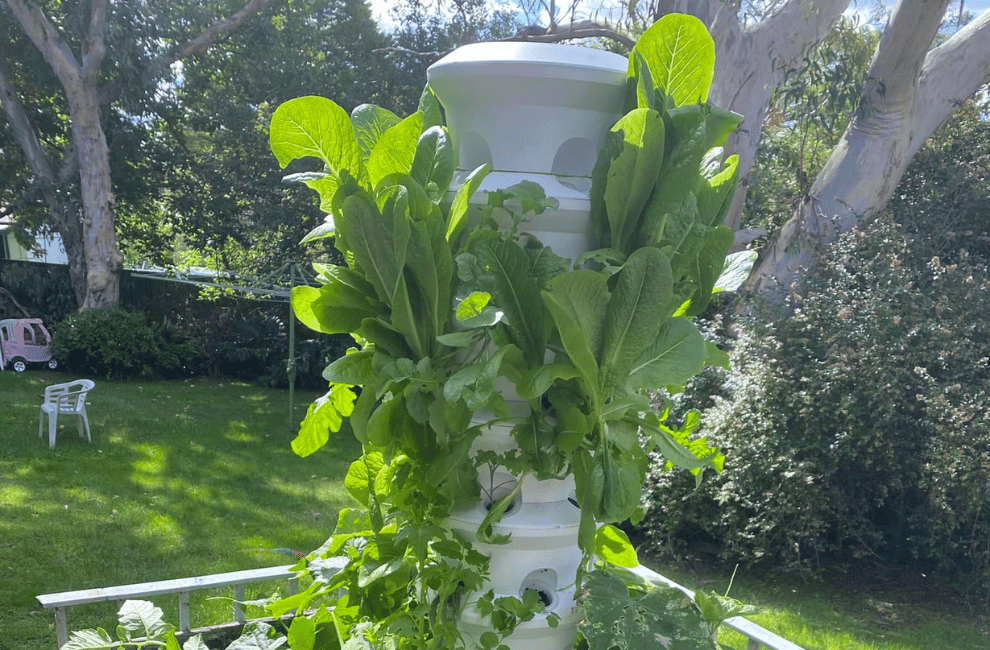
The Ultimate Guide to Aeroponics For Beginners

Aeroponics is a method of growing plants without soil and using water to spray the roots. It is gaining enormous popularity among urban gardeners and those who want to grow fresh vegetables, herbs and leafy greens all year round - particularly in small spaces like patios, balconies, courtyards and small gardens. However, for beginners, starting a aeroponics garden to grow your own vegetables and leafy greens can seem overwhelming - but don't be discouraged - there is strong return on investment in starting an aeroponics garden, as well as many health benefits of nurturing and growing an aeroponics garden.
In this article, we provide a comprehensive guide on how to grow aeroponics for beginners, including the basic principles, also the types of hydroponic systems, including aeroponics and choosing the right plants, as well as maintenance tips.
What is Aeroponics Growing?
Hydroponic gardening is a method of growing plants in a nutrient-rich water solution instead of soil. Aeroponics has a similar system, but instead of the plant roots engorged in the water, the water is sprayed as droplets onto the plant roots - thus creating less water waste and more efficacy. The plants are grown in a controlled environment where the water, nutrients, and pH levels are carefully monitored and adjusted to optimise plant growth. This type of aeroponics gardening allows for precise control of plant nutrition, faster growth, and higher yields of leafy greens, vegetables and herbs than traditional soil-based gardening. It's becoming an increasingly popular method for urban gardeners and those who want to grow fresh produce all year round.
Benefits of Aeroponics Gardening
Aeroponics gardening has several benefits and advantages over traditional soil-based gardening. Firstly, it allows for precise control of plant nutrition, which can result in faster growth, higher yield of produce and harvested vegetables, and healthier plants with less bugs and disease. Secondly, aeroponics eliminates the need for soil, which means less water and space is required, making it ideal for urban areas or small spaces. Additionally, aeroponics systems are designed to be highly efficient, using less water and nutrients than traditional gardening methods. Lastly, aeroponics can be done indoors or outdoors, allowing for year-round growing in any climate for any type of produce - especially your favourite leafy greens that you enjoy eating - harvested and cut fresh from your aeroponics gardening system. Overall, aeroponics gardening is a sustainable, efficient, and innovative method of growing plants with less waste, less water, more produce, faster grown produce and with more options to grow more plants.
Easiest Types of Aeroponics Systems
There are several types of hydroponic systems available - where aeroponics is one of the best and most efficient options of soil-less gardening to consider - these include deep water culture, nutrient film technique, drip irrigation, and as mentioned - aeroponics. In deep water culture, plant roots are suspended in a nutrient-rich water solution, while nutrient film technique involves a thin film of nutrient solution flowing over the roots. Drip irrigation delivers nutrients to the plants through drippers, and aeroponics involves misting the roots with a nutrient solution. Aeroponics is a highly efficient method that allows for faster growth and higher yields. Airgarden is an aeroponic gardening system that allows for easy and efficient indoor gardening. With its automated watering and nutrient delivery system, Airgarden's product offering is ideal for beginners and experienced gardeners alike.
Setting Up Your Aeroponics Garden
Setting up a hydroponic garden like an aeroponics garden option, may seem like a daunting task, but it's actually quite simple and straightforward. Hydroponic gardening is becoming increasingly popular, especially for those who live in urban areas or have limited outdoor space. We provide a step-by-step guide on setting up your hydroponic garden and discuss some important considerations such as climate zone, plant selection, choosing the right hydroponics system, such as an aeroponics system, as well as the care and maintenance required to fulfil the best yield all year!
Climate Zone Considerations in Australia
One of the most important considerations when setting up a hydroponic garden is the location. Climate zone plays a crucial role in determining which plants will grow best in your area. Australia has a diverse climate, with different regions experiencing different weather patterns. Therefore, it's important to select plants that are suitable for your specific climate zone to ensure successful growth and high yields.
Selecting The Right Plants For Beginners
Choosing the right plants is also crucial when setting up a hydroponic garden, especially for beginners. It's important to select plants that are easy to grow and maintain, such as leafy greens, herbs, and strawberries. These plants are also suitable for indoor growing and don't require a lot of space. Additionally, they grow quickly, allowing for fast and frequent harvests.
Choosing The Right Hydroponics System
There are several types of hydroponic systems available, and choosing the right one is important for your success. Airgarden is an innovative aeroponic system that's ideal for beginners. This system is easy to set up and maintain, and it allows for efficient and consistent growth of plants. The automated watering and nutrient delivery system ensures that the plants receive the optimal amount of water and nutrients, resulting in healthy growth and high yields.
Care and Maintenance Instructions
Finally, proper care and maintenance are crucial for growing aeroponically. Monitoring pH levels, nutrient levels, temperature, and humidity are all important factors that affect plant growth. It's also important to keep an eye out for pests and diseases and take appropriate measures to prevent or treat them. Regular maintenance, such as cleaning and replacing the nutrient solution, will also ensure healthy plant growth and high yields.
Harvesting & Storing Aeroponic Plants
Aeroponic gardening is an efficient and innovative way to grow plants. One of the benefits of aeroponic gardening is the ability to grow fresh produce all year round. However, knowing when and how to harvest and store your aeroponic plants is crucial to maintaining their quality and taste. Below - we explain the factors and considerations for harvesting, different harvesting techniques, and how to properly store your aeroponic vegetables, leafy greens, herbs and fruiting plants like tomatoes.
Knowing When To Harvest
Knowing when to harvest your aeroponic plants is essential to ensure that they are at the peak of their flavor and nutrition. Some factors to consider when harvesting include the plant variety, growth stage, and environmental conditions. It's important to harvest leafy greens and herbs when they are young and tender, while fruiting plants like tomatoes and strawberries should be harvested when they are ripe but still firm. Taste and appearance can also be good indicators of when to harvest.
Different Harvesting Techniques
There are various techniques for harvesting hydroponic plants. One common technique is to use scissors or shears to cut the plant just above the crown, leaving some leaves for regrowth. Another method is to twist or snap the plant off at the base, but this technique is not suitable for all plants. It's important to research and use the appropriate technique for each type of plant to avoid damaging the plant and ensure a good yield.
Storing Aeroponic and Hydroponic Plants
Storing aeroponic and hydroponic plants properly can help preserve their flavor, quality, and nutrition. It's important to wash and dry the plants thoroughly before storing them. Leafy greens and herbs can be stored in a plastic bag with a damp paper towel in the refrigerator for up to a week. Fruiting plants like tomatoes should be stored at room temperature away from direct sunlight to prevent them from becoming too soft or mushy. Additionally, using airtight containers or vacuum-sealed bags can help prolong the shelf life of your aeroponic plants.
Start Your Aeroponics Garden With Airgarden Today!
In conclusion, growing aeroponic plants requires attention to detail and careful consideration, however can be a hugely advantageous way of growing your own fresh greens, leafy vegetables, tomatoes, eggplants, herbs and spinach. With an all-in-one system like the Airgarden, you can grow plants easily and quickly.
To learn more - get in touch with the Airgarden team and discover how an Airgarden will change your daily plate.







